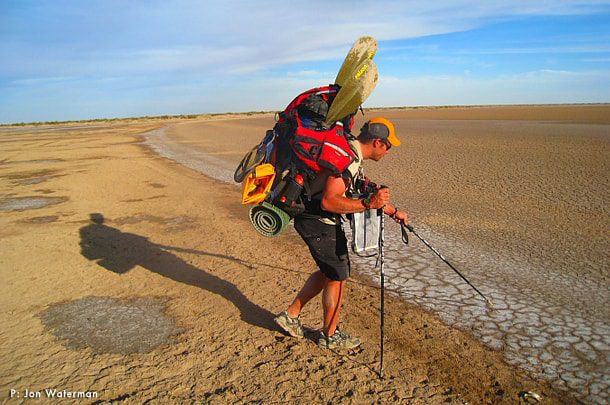

In the midst of this snowpack-angst and against a backdrop of buzz over the drought’s possible return, the newest statewide water conservation numbers were recently released, and they don’t look good for San Diego County. Our region’s water use is up – way up – when compared to the water savings we made during the drought. In fact, of those San Diego water agencies reporting, nearly all showed that in December of 2017 San Diego as a region used more water than we did in 2013, before the drought state of emergency was even declared. Less than one year after the Governor declared the drought emergency over, water use has spiked in San Diego, and the gains we made in conservation have taken a serious hit.
The “whys” and “hows” of what caused this significant uptick are as of yet a bit unclear, but last year’s heavy rains are likely partly responsible for washing drought anxiety in San Diego down the drain. On top of that, the San Diego County Water Authority continues to spread the message that San Diegans need not worry, and that despite the return of dry conditions and lack of precipitation, our water supplies are sufficient for the year. This is perhaps unsurprising coming from those same agencies who rely on the income from our water bills to pay for increasingly costly water supplies. While we applaud the local water agencies for steps they’ve taken to ensure San Diego plays a leadership role in the development of recycled water supplies, the Water Authority’s opposition to water conservation measures and consistent “no worries” messaging to residents and decision-makers over the last several years is likely at least somewhat to blame for our region’s sharp increase in water use.
“San Diego’s recent uptick in use doesn’t have to become a trend.”
It’s disappointing that San Diegans are using more water today than we were in the pre-drought bliss of 2013, but San Diego’s recent uptick in use doesn’t have to become a trend. On the heels of one of the worst droughts California has ever seen, and with talk of drought once again gripping our state, the City of San Diego – which makes up the single largest voting block on the Water Authority board – can instead position itself as a leader by supporting water conservation and efficiency measures that reduce local use and ensure we’re appropriately responding to drought-like conditions.
Proposed water efficiency and drought-planning legislation – in the form of Assembly Bill 1668 and Senate Bill 606 – provides for a flexible and locally-tailored approach to conservation that will ensure our San Diego water future is both resilient and sustainable. That legislation is the result of a cooperative stakeholder approach to ensure that future droughts are adequately planned for and that blanket reductions based on percentages in water use are a thing of the past. These new standards accomplish this by instead considering the local conditions throughout the state, including allowances for hotter and drier conditions when establishing how water suppliers will calculate their customized, long-term water use target, and providing for a variance process instead of a “one size fits all” approach.
“Our past practices and conservation approaches show that San Diegans can achieve greater water use efficiency without negatively impacting our way of life.”
For example, under the proposed legislation, should the City of San Diego want to maximize water available for the planned Pure Water recycling program, the legislation allows the City to focus its conservation efforts on outdoor water use – where the majority of our use occurs – and addressing leaks in aging pipes and infrastructure. Either of these approaches, or a combination of both, would allow water agencies throughout San Diego to meet the proposed efficiency targets while ensuring our recycled water programs are achievable and sustainable. It is also important to note that while the region as a whole performed poorly in the latest conservation reports, the City’s latest reports show a gallons-per-day use of around 59 gallons for combined indoor and outdoor use, only 4 gallons over the proposed legislation’s standard of 55 gallons for indoor use alone. This means that City itself is already meeting the 2020 targets – and likely the 2030 targets – of the legislation. This puts the City in a comfortable place to take a leadership role in the region, and be a voice for water efficiency among other regional water suppliers seeking to weaken statewide conservation measures.
With the return of hotter and drier conditions, these proposed conservation measures provide San Diego’s representatives with the perfect opportunity to position our city as a statewide leader in water use efficiency and drought preparedness. A position that will serve us well as we move into a “new normal” of longer, more severe periods of drought. But what should seem like a common-sense approach is being met with resistance from several water agencies that are seeking to weaken these bills by building in large “credits” which would allow the San Diego region to use more water even where it’s not necessary or needed – essentially legalizing the wasteful use of water. By taking a strong support position for statewide water conservation and efficiency legislation, the City of San Diego and local decision-makers can send a clear signal that water conservation and responsible supply development are not mutually exclusive. San Diego can and should be supporting efforts throughout the state to make conservation a way of life in every part of California. Through that support, our region will take its place as a leader in furthering the most cost-effective and sustainable water supply – conservation – and champion measures that will get us back on track to recommitting to a more efficient relationship with water in the face of growing supply uncertainties to come.
















